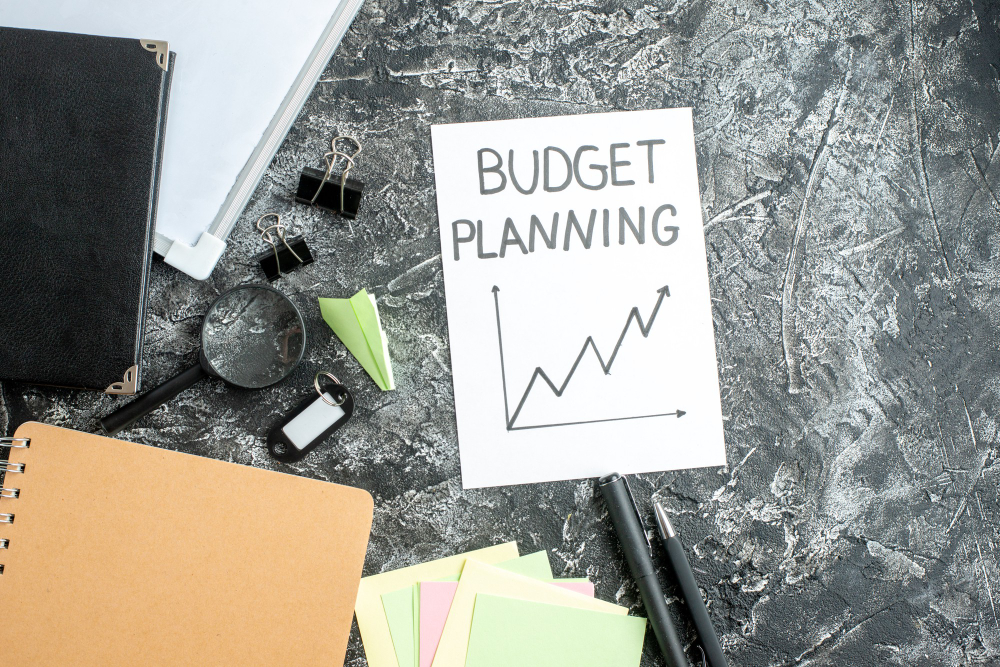How to Create a Realistic and Effective Budget Plan

In the intricate tapestry of personal finance, the foundation of financial success lies in budgeting. You are crafting a realistic and practical budget that demands a strategic approach, aligning your financial aspirations with practicality. This article seeks to uncover the fundamental aspects of steps required to navigate the realm of budgeting, offering insights that transform your fiscal goals from distant dreams to tangible achievements. As we delve into the intricacies of budget creation, we will explore critical facets such as assessing your financial situation, setting achievable goals, categorising and prioritising expenses, and leveraging technology for seamless monitoring. By following these steps, you will understand your financial landscape and empower yourself to make informed decisions that propel you towards financial prosperity.
1. Assess Your Financial Situation
- Assessing your financial situation is a pivotal first step towards financial stability and success. This process thoroughly examines your income, expenses, and overall monetary standing. Creating a comprehensive overview of your financial landscape gives you valuable insights that form the bedrock of informed decision-making. Start by cataloguing all sources of income, from your salary to any additional revenue streams. This meticulous documentation provides a clear understanding of your financial inflows. Simultaneously, scrutinise your fixed costs, encompassing essential bills like rent or mortgage payments, insurance, and loan repayments. Variable expenses like groceries and entertainment should also be meticulously accounted for. This comprehensive evaluation, often facilitated through financial statements and receipts, unveils patterns in your spending habits, identifying areas where you can optimise and save.
- Gaining insight into your financial situation empowers you to establish practical and attainable goals. With knowledge about your income and expenses, you can make informed choices regarding allocating your resources. This level of awareness is the foundational element of successful budgeting, guiding you through the intricacies of managing personal finances with precision and clarity. Moreover, a comprehensive evaluation enables you to pinpoint areas that could be enhanced and set a benchmark for financial planning. It unveils the destinations of your financial resources, underscores potential stress points in your financial landscape, and offers the clarity necessary to tackle these challenges effectively.
2. Set Clear and Achievable Goals
- Setting clear and achievable financial goals is the bedrock of effective money management. This process involves defining specific objectives that are measurable, attainable, relevant, and time-bound (SMART). Rather than vague aspirations, articulate precise targets, such as saving a particular amount each month for a defined period or paying off a specific debt within a set timeframe.
- These goals serve as a guiding compass for your budget, providing direction and purpose. Clear goals motivate disciplined financial behaviour and enable you to track progress and celebrate milestones. They act as a roadmap, aligning your budget with broader financial aspirations and ensuring your financial decisions are intentional and purposeful. Through this strategic goal-setting process, you gain control over your finances, fostering a proactive and empowered approach to money management.
3. Categorise and Prioritise Expenses
- Categorising and prioritising expenses is a pivotal step in effective budgeting. Begin by classifying costs into fixed and variable categories. Fixed expenses encompass non-negotiable monthly bills like rent, mortgage, and insurance, while variable costs include discretionary spending like entertainment and dining out. Once categorised, prioritise these expenses based on their significance in achieving your financial goals. Allocate a substantial share of your budget to cover crucial fixed expenses consistently.
- Then, distribute the remaining funds among variable expenses, giving more weight to categories aligned with your priorities. This strategic approach ensures that your budget reflects your financial objectives, emphasising essential obligations while allowing flexibility in discretionary spending. By categorising and prioritising expenses, you create a financial roadmap that aligns with your goals, fostering a more focused and effective budgeting strategy.
4. Embrace Technology for Tracking and Monitoring
- Embracing technology for tracking and monitoring is a transformative aspect of modern budgeting. Leveraging budgeting apps and software allows real-time visibility into your financial landscape, providing graphical representations of income and expenses. These tools simplify the tracking process, enabling you to effortlessly identify patterns, trends, and areas for improvement.
- Automating bill payments through technology helps prevent late fees and streamlines financial management. Alerts can be set up to notify you of approaching budget limits or irregular transactions, enhancing financial control. The integration of technology not only reduces manual effort but also empowers informed decision-making. By embracing these digital tools, you gain a dynamic and interactive approach to budgeting, fostering financial awareness and facilitating adjustments as needed for a more streamlined and effective financial journey.
Conclusion
On the journey to financial success, a carefully constructed budget is your guiding compass through the intricacies of income and expenses. By assessing your financial situation, establishing precise goals, prioritising expenses, and integrating technology, you can forge a budget that mirrors your financial landscape, propelling you towards your desired aspirations. Remember that a budget is not a constraining instrument but a liberating one, allowing you to make deliberate financial choices. As you initiate your budgeting journey, maintain focus, remain adaptable, and witness the transformation of your financial aspirations into tangible reality.





